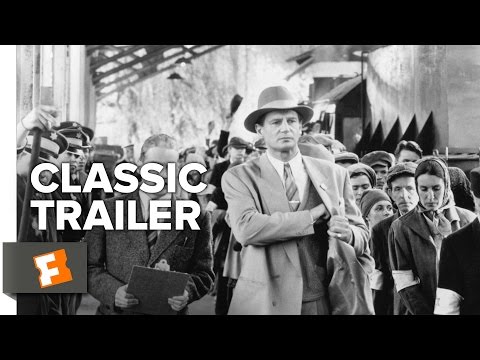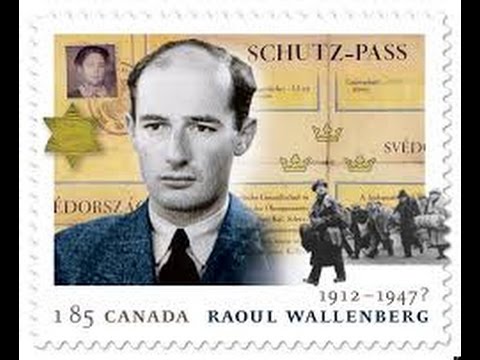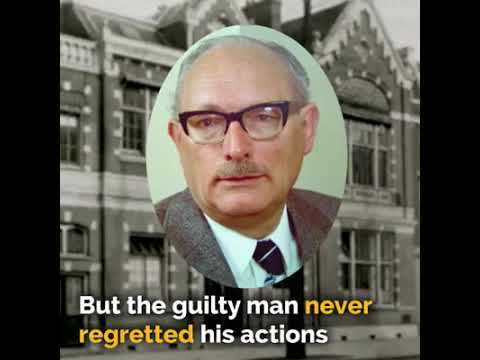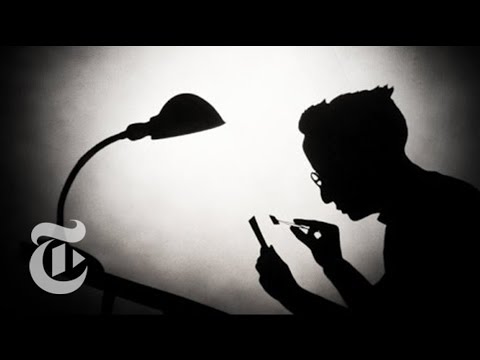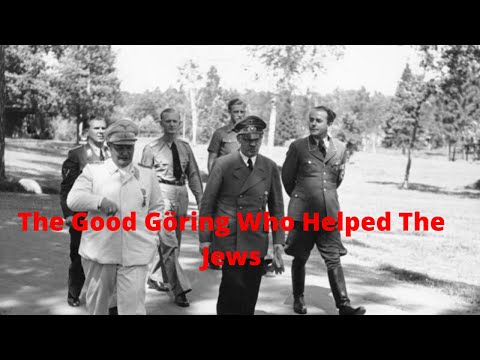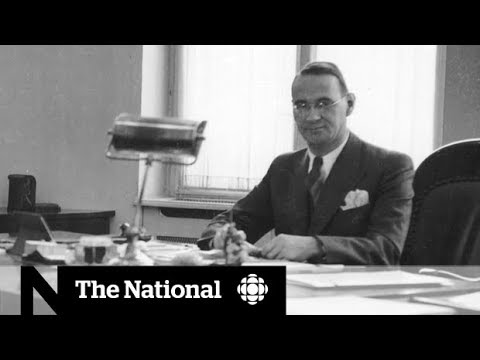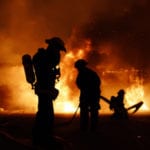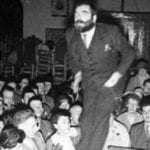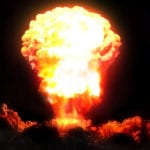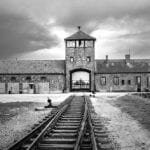During the Holocaust, there were thousands of people who defied the rules set down by the Nazis, and collectively, they saved countless Jews, homosexuals, African Europeans, Romany, and other minorities from certain death. The stories of their brave defiance against Hitler and his followers stand as a testament to the heroism of a select few. The following people are listed in no particular order, as each one stands as a hero worthy of praise. These amazing people did whatever they could during the darkest of times, and are heroes of the Holocaust. 10 Amazing Ways People Survived The Holocaust
10 Oskar Schindler
One of the most well-known people who defied the orders of Nazi Germany was Oskar Schindler. The details of his work in saving Jews from execution were detailed in Steven Spielberg’s award-winning film, Schindler’s List, which was released in 1993. Schindler was a member of the Nazi party, prior to the outbreak of war, he spied against Czechoslovakia by reporting railway information and troop movements to the Nazis. He continued in this vein for Poland, and in 1939, he acquired an enamelware factory in Kraków, Poland, which came with approximately 1,000 Jewish “workers.” For the next five years, Schindler worked to ensure the safety of his workforce, and through his connections, he was able to keep them from being deported to concentration camps. As the war progressed, this became more difficult, and he utilized the black market to bribe Nazi officials. Schindler was able to convince Amon Göth to let him move his factory to Moravia when the Eastern lines began to close in on Poland. He created a typed list of 1,200 Jews to take with him, and when the war ended, he had spent his entire fortune ensuring their safety. Schindler and his wife Emilie were named Righteous Among the Nations by the Israeli government in 1993.[1]
9 Audrey Hepburn
Audrey Hepburn is probably best known for her acting work on classic films, including My Fair Lady, Roman Holiday, and Breakfast at Tiffany’s, but those films are hardly the only thing she did in her life. Her most important role wasn’t in a Hollywood film; rather, it was a story about a Dutch aristocrat who aided in her nation’s resistance against the Nazis and helped people escape their persecution. After her uncle, Otto Ernst Gelder, was executed by the Nazis, she joined up with the Dutch Resistance, aided Jews in hiding, raising funds through her work as a prima ballerina to keep those people safe through the conflict. Watch this video on YouTube Hepburn and her mother heard the destruction of their home town when the Allies were defeated at the battles of Arnhem and Oosterbeek. She risked her life to protect a British soldier, and she and her mother worked as assistants to nurses. She was once rounded up by the Nazis, and faced certain death, but was able to escape. Hepburn was greatly affected by the war, and would never repeat her uncle’s name following his death. She declined to appear in A Bridge Too Far because it depicted the battles she suffered through. Hepburn continued to work in support of humanitarian efforts following WWII and became a UNICEF ambassador, working with children affected by the conflict.[2]
8 Raoul Wallenberg
Raoul Gustaf Wallenberg was a Swedish architect, diplomat, and businessman who is best known for his work saving tens of thousands of Hungarian Jews during the Holocaust. Between July and December 1944, Wallenberg worked as Sweden’s special envoy to Budapest, where he was responsible for issuing passports. While working in this capacity, Wallenberg issued 650 protective passports to Jews with any connection to Sweden, helping to save them from deportation to concentration camps. During this time, he also managed to hide and shelter Jews in 32 buildings, two hospitals, and a soup kitchen owned and operated by the Swedish government. The Swedish designation kept them part of Swedish territory and off-limits to the Nazis. Wallenberg also gave approximately 4,500 Jews a protective letter, which kept them from being used as slave labor, and they weren’t required to wear a yellow Star of David. Wallenberg survived the Siege of Budapest in 1945, though, he was detained on suspicion of espionage. He was never seen again, and it’s believed he was imprisoned by the KGB in Lubyanka, where he likely died. His work during the war has earned him numerous recognitions, including being named Righteous Among Nations by the Israeli government. Additionally, a committee named in his honor awards the Raoul Wallenberg Award on an annual basis for anyone who has been noted to “perpetuate the humanitarian ideals and the nonviolent courage of Raoul Wallenberg.”[3]
7 Johan Van Hulst
Johan Willem van Hulst was a Dutch university professor, author, politician, and school director who is remembered for saving the lives of 600 Jewish children. In 1943, he worked alongside members of the Dutch Resistance and students of the University of Amsterdam to save children from the nursery of the Hollandsche Schouwburg, all of whom were set for deportation to Nazi concentration camps. Hulst’s Reformed Teacher Training College sat across the street from the theater, where Jews were processed to be deported to camps around Europe. When they arrived, their children were separated from the families and sent to a local nursery, which shared a garden with Hulst’s college. Beginning in January 1943, Hulst, alongside an army of resistance members, began finding families who could adopt Jewish children they physically resembled. When a match was made, the child’s name was stricken from the Nazi records, and they were spirited over a hedge in the garden. They were often hidden in bags or baskets and then moved throughout the city. Hulst spoke about his work decades later after the Nazis ordered 100 children to be sent to the camps. “Now try to imagine 80, 90, perhaps 70 or 100 children standing there, and you have to decide which children to take with you….That was the most difficult day of my life….You know for a fact that the children you leave behind are going to die. I took 12 with me. Later on, I asked myself: ‘Why not 13?’”[4]
6 Adolfo Kaminsky
Adolfo Kaminsky was a member of the French Resistance during the Nazi Occupation of France. He specialized in the forgery of documents, and he worked tirelessly throughout the war to forge identity papers for more than 14,000 Jews. Kaminsky entered into the Resistance at the age of 17, after the Nazis killed his mother. Early in his career as a resistance fighter, he sent messages to London about train movements. After nearly being deported in 1943, Kaminsky and the rest of his family moved to Paris. He began working in an underground laboratory, forging papers for Jews the Nazis were actively seeking in France. Kaminsky was devoted to his forgery operations, and he once said of his work, “Keep awake. The longer possible. Struggle against sleep. The calculation is easy. In one hour, I make 30 false papers. If I sleep one hour, 30 people will die.” Following the Liberation of Paris in 1944, he joined the French Army and became involved in the creation of false IDs for spies sent behind enemy lines. He continued his forgery operation after WWII in support of draft dodgers during the Algerian War. He supplied papers to other activist groups, never taking payment for his efforts, having supported one forgery operation or another for more than thirty years.[5] 10 Inspiring Stories Of True Love From The Holocaust
5 Frank Foley
Major Francis “Frank” Edward Foley was a British Secret Intelligence Service officer who was responsible for passport control at the British Embassy in Berlin before the war. In this capacity, he issued thousands of papers to Jewish families who were escaping Nazi Germany following the Night of Broken Glass, just before the war began. His work before the war has labeled him as the “British Schindler,” due to the thousands of people he saved. It’s difficult to estimate precisely how many people Foley kept from ending up in concentration camps, but the numbers are likely more than 10,000 Jews. Foley risked his life by bending the rules in Berlin, and the papers he issued helped Jewish families escape quasi-legally to Britain or Palestine, which was controlled by Britain at the time. He also went into internment camps on several occasions and helped them escape. He protected several in his home until he could get them forged documents. He wasn’t recognized for his efforts saving Jews during his lifetime, but since his death in 1958, he has been recognized by numerous governments, including the British government, which has designated him as a British Hero of the Holocaust, and the Israeli government, which identified him as Righteous Among the Nations.[6]
4 Albert Göring
For anyone who has studied the people responsible for many of the events of WWII, they likely know the name Hermann Göring. He was the head of the Luftwaffe and a leading member of the Nazi party. Fortunately, he wasn’t the only member of his family, as his brother, Albert Göring, worked in opposition to his brother’s efforts. Albert was opposed to the Nazis from the beginning, and never supported his brother or his work. During the war, he helped Jews and other minorities persecuted by the Nazis in various ways. He used his influence to get his former Jewish boss, Oskar Pilzer, freed after the Nazis arrested him, and subsequently aided him and his family in escaping from Germany. He forged his brother’s signature on various transit documents, allowing numerous dissidents and Jews to escape. He was eventually caught, but his last name got him out of trouble. He also sent trucks to concentration camps asking for workers, but the trucks would unload its ‘cargo’ in an isolated area, where they could escape. Göring was questioned during the Nurenberg Tribunal, and several people testified on his behalf, resulting in his release. He was vilified following the war due to his name and association with his brother, but he is now recognized as another hero of the Holocaust who saved the lives of many persecuted people.[7]
3 Nicholas Winton
Nicholas Winton was a British humanitarian who actively worked to save as many children as he possibly could as World War II began to break out in Europe. He supervised the saving of 669 children, most of whom were Jewish, from Czechoslovakia shortly before the war started. Winton started this effort in 1938 when he created an organization with the mission of aiding Jewish children at risk from the Nazis. He set up an office at the table in his hotel room, and through some bureaucratic meddling, he gained permission to allow any refugees under the age of 17 legal entry into Britain, provided they had a place to stay and £50 meant for their return trip to their home country. His efforts included writing politicians, asking if they would take any refugees. Sweden was the only other nation besides Britain to take any of the children. He managed to save 669 children, though he believed he could have saved more had the United States and other countries taken in some of the refugees. He went unrecognized for his efforts for 50 years, but in 1988, he was invited to the BBC program That’s Life! He was reunited with several of the children he saved, all of whom were adults. He was dubbed the “British Schindler” by the press. In 2003, he was knighted by Queen Elizabeth II for “services to humanity, in saving Jewish children from Nazi Germany occupied Czechoslovakia.”[8]
2 Carl Lutz
Carl Lutz was a Swiss diplomat who served as the Swiss Vice-Consul in Budapest, Hungary, from 1942 until the conclusion of World War II. By the end of the conflict, he saved more than 62,000 Jews in the largest Jewish rescue operation of the war. His actions saved half the Jewish population of Budapest, Hungary, from being deported to concentration camps. He accomplished this when, in 1944, after the Nazis occupied Budapest, he received special permission to issue 8,000 letters to Hungarian Jews, allowing them to emigrate to Palestine. Watch this video on YouTube Skirting the rules, he applied the letters to whole families instead of individuals, but his real trick was to issue tens of thousands of letters, all numbered between one and 8,000. By doing this, he was able to save tens of thousands of people, but it wasn’t the only thing he did to save Jews. With the help of many others, he established 76 safe houses in and around Budapest, declaring them annexes of Swiss property, making them safe from Nazi soldiers. Because of his work, more than 62,000 were spared from the death camps, and he has since been recognized with the title of Righteous Among the Nations by the Israeli government.[9]
1 Irena Sendler
Irena Sendler was a Polish social worker and nurse who fought against the Nazi occupation of Poland via the Polish Underground. During the war, she worked in Warsaw for the Department of Social Welfare and Public Health, but her more important activities were carried out under less than official channels. She actively worked to save Jewish children alongside a network of like-minded workers, most of whom were women. Sendler helped to smuggle Jewish children out of the Warsaw Ghetto and then provided them with false identity paperwork, indicating they belonged to Polish families willing to take the children in as their own. She also placed some in orphanages, and with Catholic nuns in convents. She was suspected of participating in the Polish Resistance, and in 1943, she was arrested by the Gestapo but managed to hide the list of children she had on her at the time. Doing so saved the lives of countless people, which included the children and the people protecting them. She was scheduled to be executed, but escaped after the ?egota, the Polish Council to Aid Jews, bribed the German officials. Following the war, Sendler continued to work various humanitarian causes, and in 1965, the Israeli government recognized her as Righteous Among the Nations. She also received the Order of the White Eagle, the highest honor bestowed by the government of Poland. In addition to these ten amazing humanitarians, there were thousands of brave men and women working underground and behind the scenes to save people from the Holocaust. While they can’t all be detailed on a list like this one, they should all be remembered for their bravery and sacrifice. If you would like to help in the education and remembrance of the Holocaust and its survivors, please consider donating to organizations like The Zachor Holocaust Remembrance Foundation, The UK Holocaust Memorial Foundation, or any of the amazing non-profit charities out there working to ensure something like the Holocaust never happens again.[10] 10 Havens During The Holocaust Read More: Twitter Facebook Fiverr JonathanKantor.com
